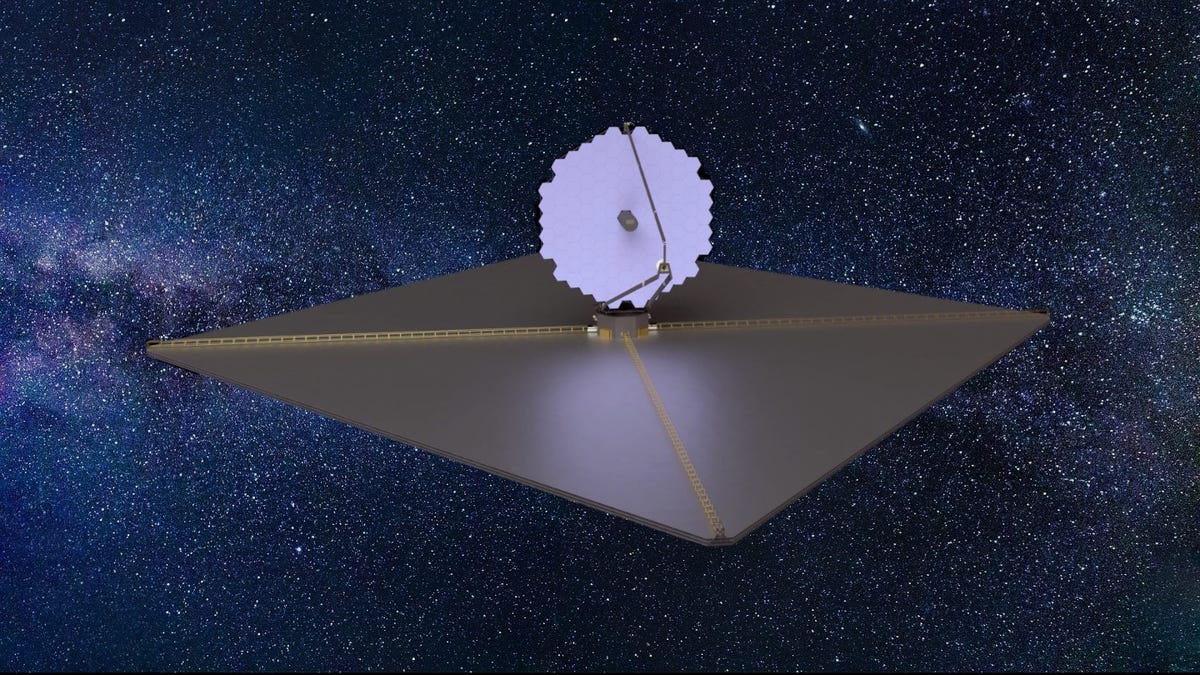
This is NASA’s preliminary design of the Luvoir Telescope. The agency’s upcoming Habitable Worlds Observatory could possibly look like a scaled-down version of this.
NASA
Just over a year ago, when NASA’s James Webb Space Telescope switched on, dominating headlines of even mainstream media, it felt like the start of a new era. Booted up with infrared sensors and crowned with 18 gold-plated mirrors, the JWST reminded the world that even though most of us are stuck on Earth, home base isn’t all we have to explore.
After the JWST’s resounding success, NASA officials hit us with their sci-fi blueprints of a planetary defense system. They also managed to begin the modern-day Apollo years with the Artemis I moon mission — no matter the cost — and even started building a rock sample drop-off depot on Mars reminiscent of scenes out of Star Trek. And in early January, during the 241st meeting of the American Astronomical Society, NASA announced its plans to continue fueling a welcome reinvigoration of the American space program.
But of everything presented, what seems to have caught quite a bit of public attention (mine included) is an update on something called the Habitable Worlds Observatory.
Simply, this telescope is expected to peer out at the universe, detect a stunning variety of deep-space light wavelengths and even be serviceable in outer space, where it’ll actually sit right next to its predecessor, the JWST.
The ultimate goal of this machine? Discover a planet with alien life ASAP.

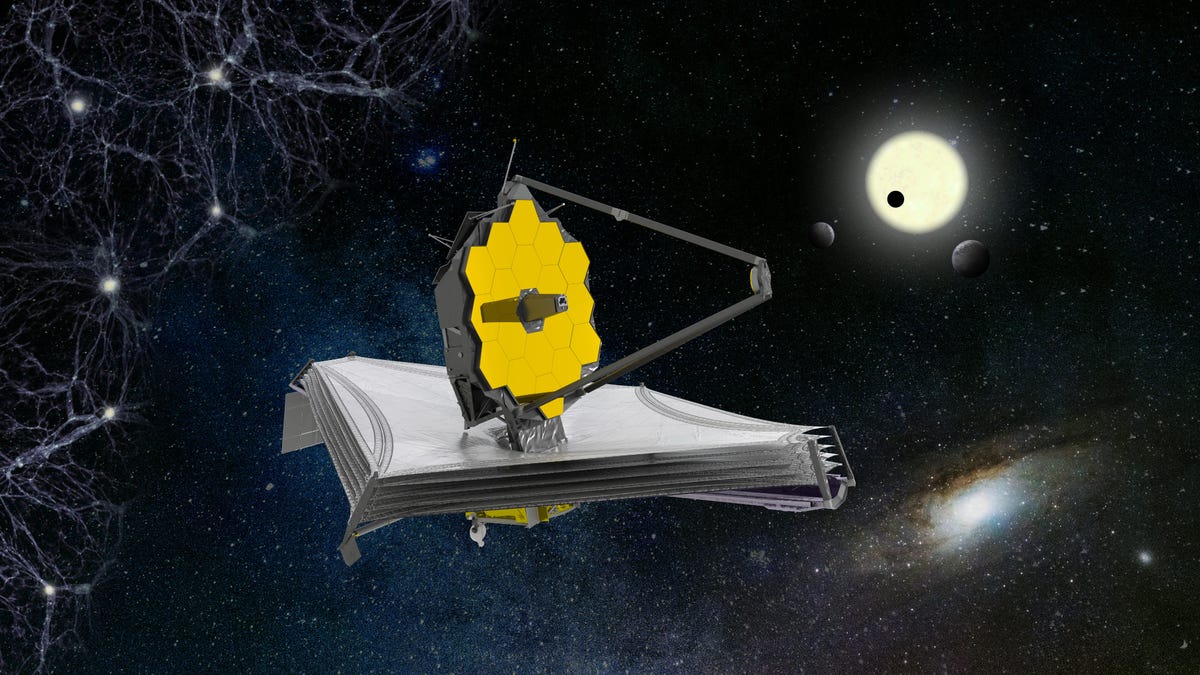
An artist’s impression of the James Webb Space Telescope, a joint project between NASA, the Canadian Space Agency and the European Space Agency.
ESA/ATG medialab
Sound familiar?
Since the 1990s, thanks to incredible innovations like NASA’s Transiting Exoplanet Survey, scientists have discovered a staggering number of exoplanets, including Earth twins, water worlds, weirdly shaped rugby orbs, realms where it rains diamonds and even places that literally remind us of hell.
A handful of these are considered “possibly habitable,” meaning they could potentially hold evidence of, at the very least, ancient microbial remnants. Life as we know it. But we’ve yet to find a world where such life exists, or once existed.
NASA’s Habitable Worlds Observatory, which the agency expects to launch in the 2040s, will specifically be built to get that certainty of life beyond Earth.
As Mark Clampin, director of the agency’s astrophysics division, put it during a NASA town hall at the recent American Astronomical Society meeting, the primary science goal of this observatory will be to “survey nearby stars for habitable planets and characterize them for evidence of life.”

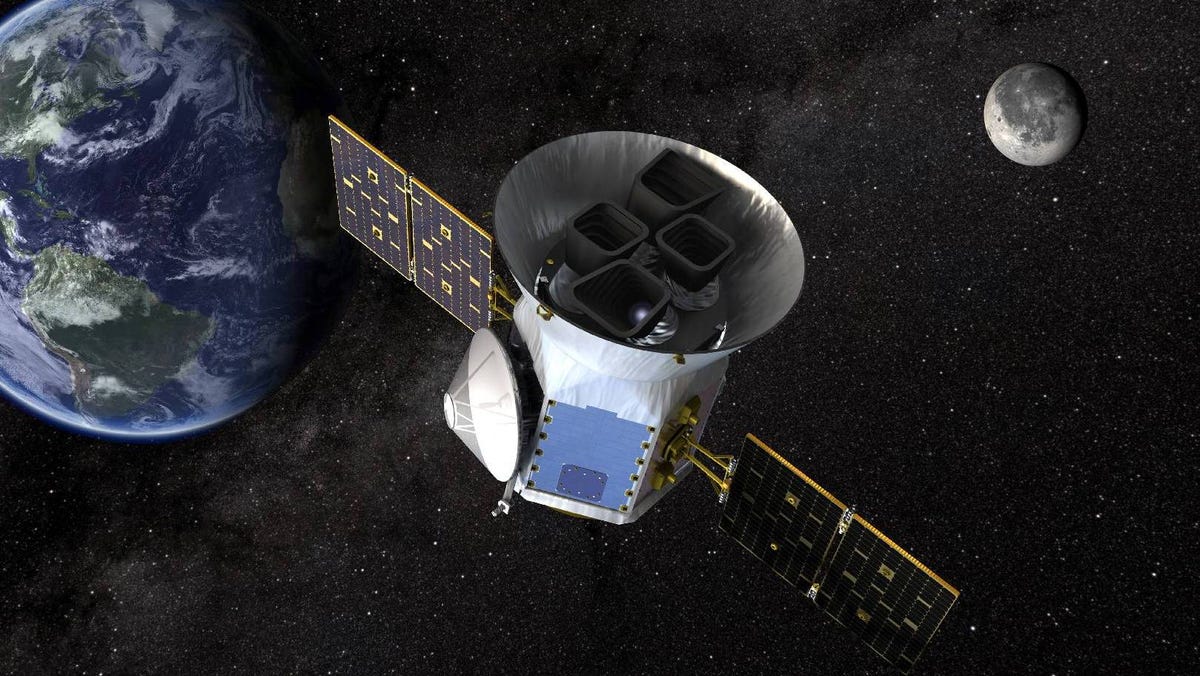
An illustration of NASA’S TESS spacecraft.
NASA
The push behind this project is a report called the Astro2020 decadal survey, published in November 2021 by US advisers with the National Academies of Science, Engineering and Medicine.
In a nutshell, this report emphasized three “key scientific challenges” humanity should pour effort into during the next decade. Two have to do with finding new types of physics in the universe (think, weird particles and stuff) and improving our understanding of the origins and evolutions of galaxies.
But the third challenge — and one the organization leads with — is to identify habitable Earth-like worlds in other planetary systems and determine whether life exists elsewhere in the universe.
In other words, it’s to answer the question: Are we alone?
“In the last decade the uncertainty in the number of Earth-size potentially habitable planets has been reduced by Kepler and other missions, and it is now known that such planets are common. Improved understanding of the complexities of planetary atmospheres lets us identify the spectroscopic measurements needed to assess the signatures of life,” the 2021 report said.
So in response to the decadal’s recommendations, NASA created what it calls the Great Observatory Technology Maturation Program, or GOMAP.
As reported by Jeff Foust of SpaceNews, Clampin said the first three stages of GOMAP, which had to do with organization and policymaking, are nearly complete. Phase two, he explained, will delve deeper into the Habitable Worlds mission.
“We can develop a broad portfolio of missions to pursue visionary goals, such as searching for life on planets orbiting stars in our galactic neighborhood — and at the same time exploit the richness of 21st century astrophysics through a panchromatic fleet,” Fiona Harrison, chair of the division of physics, mathematics and astronomy at the California Institute of Technology, and steering committee co-chair, said in a National Academies statement about the 2021 report.
Like I mentioned earlier, the Habitable Worlds Observatory is expected to launch at some point in the 2040s, unless the agency is able to bring that deadline closer. Which could happen.
Foust reported that during a Jan. 11 conference session at the American Astronomical Society, Jason Tumlinson, an astronomer at the Space Telescope Science Institute, suggested ways of altering budgets to introduce a quicker deadline for the observatory. All in all, these adjustments could move the HWO’s first mission up to as soon as 2035.
But because the potential launch of the HWO falls so far into the future, we don’t know a whole lot about what it may look like.
Here’s what we do know so far
At this point, based on what the 2021 decadal survey asked for, the HWO is expected to be a telescope that’s approximately 6 meters (or 20 feet, nearly the size of the JWST) that operates in ultraviolet, visible and near-infrared wavelengths of the electromagnetic spectrum.
Visible wavelengths are the ones we can see with our own eyes, ultraviolet is Hubble’s specialty, and infrared is the James Webb Space Telescope’s area of expertise.
The report — which specifically draws on ideas from what seems like an earlier version of HWO called NASA’s Habitable Exoplanet, or HabEx, Observatory — also suggested this observatory would cost something like $11 billion. That’s about a billion more dollars than the JWST cost.

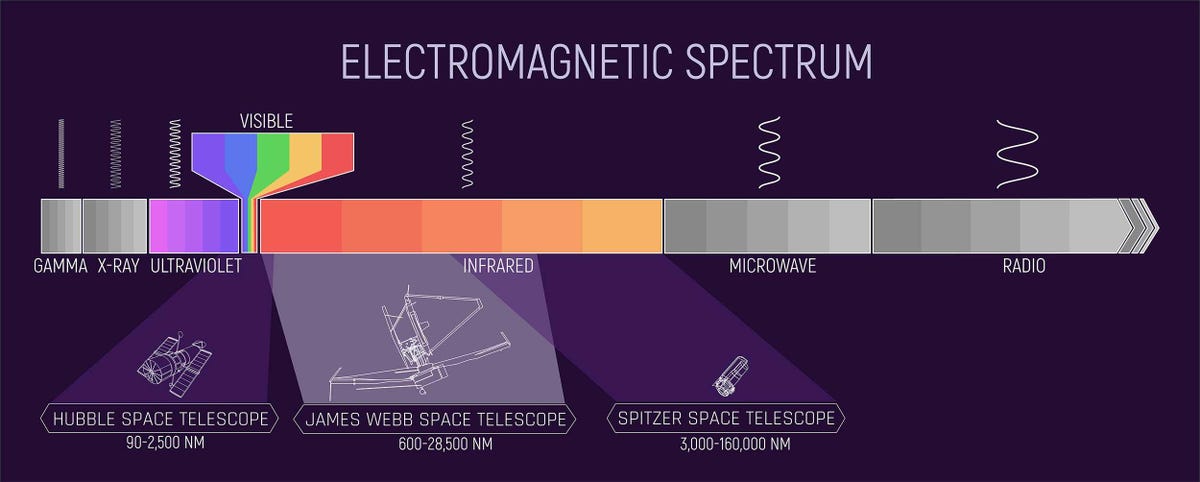
This infographic illustrates the spectrum of electromagnetic energy, specifically highlighting the portions detected by NASA’s Hubble, Spitzer and Webb space telescopes.
NASA and J. Olmsted [STScI]
And in terms of where the Habitable Worlds Observatory will be stationed, it could very well be the JWST’s new neighbor — as Clampin said, it’s going to be sent to the second Lagrange point, precisely where humanity’s current glassy muse sits. The second Lagrange point, or L2, is a gravitational balance point between the Earth and sun that’s a million miles away.
L2 is pretty perfect for space-borne robots because it can anchor them in orbit around our bright yellow star while simultaneously shielding them from the sun’s radiation.
And fascinatingly, a major upgrade that’ll set the HWO apart from the JWST is the fact that this future observatory is probably going to be “serviceable.” This means NASA would be able to robotically service and improve on the telescope even when it’s locked in space at L2 — extending its lifetime and adorning it with power-ups as though it’s straight out of a video game.
The JWST doesn’t have this option. Theoretically speaking, if something happened to the JWST, scientists couldn’t exactly fix it.
The Hubble Space Telescope, which floats much closer to us as it’s presently in Earth’s orbit, was iconic for its serviceability — the public was mesmerized watching suited-up scientists climbing atop the ‘scope and adjusting its components midair. That’s actually part of how it earned its beloved name: The People’s Telescope.


Webb orbits the sun 1.5 million kilometers (1 million miles) away from the Earth at what’s called the second Lagrange point or L2. Note: this graphic isn’t to scale.
NASA
So what could we expect the HWO to find? As outlined in the decadal survey, this futuristic observatory will hopefully be able to spot approximately 25 potentially habitable exoplanets, a sample size the authors say would provide “robustness against the uncertainties in the occurrence rate of Earth-sized worlds, and against the vagaries associated with the particular systems near Earth.”
To sum it up, the report essentially says the HWO could be a compromise between HabEx and a scaled-down version of NASA’s Luvoir concept, or Large UV Optical Infrared telescope.
The latter has a launch date of the mid-2030s and is also expected to be serviceable, but it’s much larger than 6 meters.
Its premise is also a lot more general than HWO’s seems to be — “Luvoir’s broad range of capabilities, including its wide UV-NIR wavelength range, will allow it to study yet-to-be-discovered phenomena and answer yet-to-be dreamed of questions we do not yet know to ask,” the agency says in an overview of the Luvoir mission.
Though, again, HWO isn’t expected to touch the sky for at least another decade or so — more if the mission faces the same hurdles Artemis I did.
That doesn’t mean NASA’s new era of space exploration will experience a pause, of course. In this year alone, we have a lot to look forward to.
Hubble and James Webb Space Telescope Images Compared: See the Difference

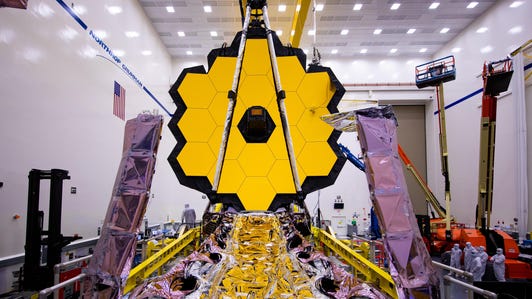

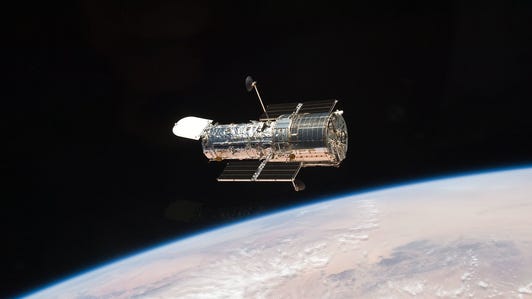

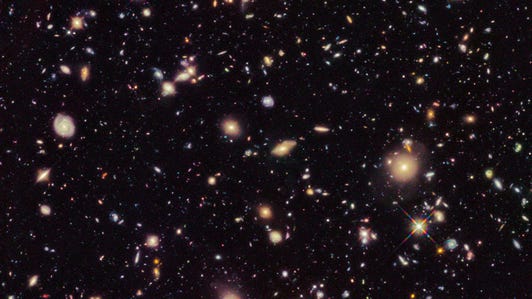
+9 more
See all photos
